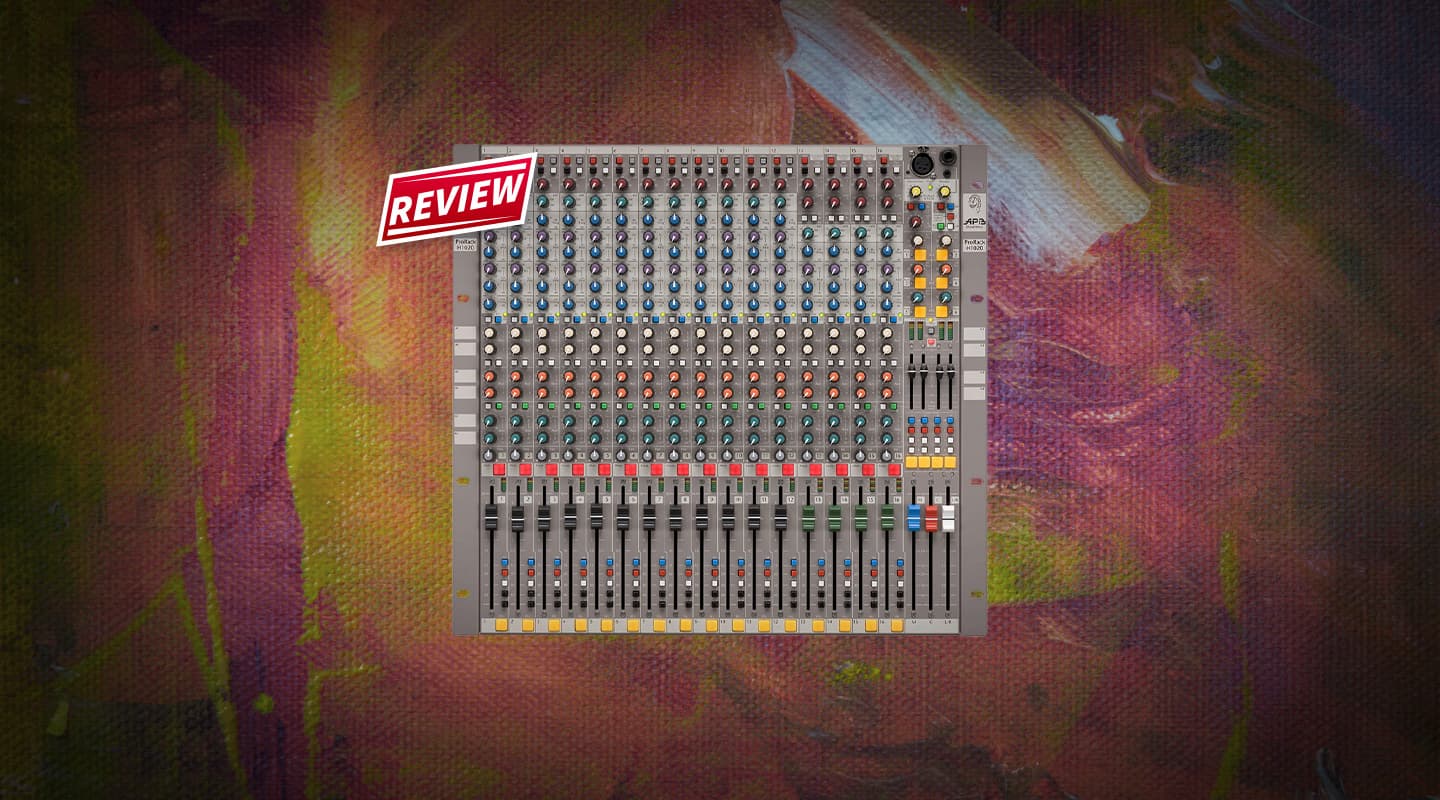
Review: APB DynaSonics ProRack–House H1020
Is this the ultimate rackmount mixer?
Review: Mark Woods
I was immediately impressed by the APB-DynaSonics ProRack–House H1020. The coloured knobs and buttons arrest the eye and compel you to reach out and tweak something – even with the mixer turned off. Meanwhile, with the power on and the music firing, the LED meters show you it’s party time. Let’s take a look.
APB account for the surname initials of the ex-Crest Audio guys who established APB-DynaSonics. Designed and built in the US, the ProRack H1020 is a small-format mixer suitable for installations, multimedia productions and field recording.
The ProRack combines top-notch audio quality with lots of controls and connectors. I’ve never seen so many knobs and buttons in a 10U rack space analogue mixer, and if there were any more you’d need to operate the console with tweezers! Thankfully, as it stands, every fader, knob and label is functional and efficient.
PUTTING OUT AN APB
The first 12 channels on the console are mono mic/line inputs channels, while 13–16 offer stereo/dual-mono mic/line inputs (two XLRs per channel) for a grand total of up to 20 XLR mic inputs. At the top of the first 12 input channels are 48V, phase invert, mic/line and a –26dB pad. Channels 13–16 can be used as line/mic inputs with 48V, pad/line, with a phase switch on the left side of each pair. There are individual gain controls for the left and right sides, which makes them very flexible and functional. They’re not ganged together like so many other stereo channels on small format consoles.
The EQ section starts with my favourite: the variable high-pass filter, which starts in the ‘off’ position to avoid any phase issues if it’s not being used. It sweeps to 400Hz at 12dB/octave and is great for removing thumps, bumps and rumbles, as well as vocal mic proximity effect. APBs hi-pass filter is much better sounding than the fixed frequency HPFs offered on most comparable mixers.
All up, the EQ is so good it, it begs to be used. The top end is silky smooth and the mids seem to grab just the right amount. The bass EQ can be boosted without undue booming and cut without taking half the sound with it… terrific!
WORKING THE STRIP
Six auxiliary sends are provided on all channels and are switchable pre/post fader (with or without EQ). Aux 5 & 6 can be configured in stereo, where Aux 5 becomes a pan control and Aux 6 the level. This is very handy for a headphone mix or monitoring when recording.
Below the aux sends is a pan control, a large, illuminated red mute button, and an LED channel level meter. Situated beside the APBs exceptionally smooth 100mm faders are routing buttons with choices of Mono, Centre, L/R, subgroups 1-2, 3-4 and a yellow illuminated PFL button. The Mono and Centre outputs can used as a separate send for subs, a centre speaker system or an A/B vocal mix.
The output section has 100mm faders for the master Mono, Centre and L/R outputs. The subgroups have short-throw 60mm faders, four switchable level meters and group assign buttons. The aux send masters knobs each have associated PFL buttons and a single, multi-coloured LED level indicator.
The monitor section allows you to choose your monitor source, including an unusual external input, which is solely for cueing or monitoring an external device. Curiously, it can’t be routed to the main outputs of the mixer. There is a monitor output level control and an ‘alternate’ stereo output of the L/R signal, with buttons to add Mono and Centre signal to the L/R output.
BIG BACKSIDE
There’s nothing bog-standard about the ProRack’s rear end either. The connector assembly rotates to different angles so the inputs/outputs can be accessed whether the mixer is mounted vertically, in a slant rack, or used as a desktop mixer – very nifty indeed. Channels 1–12 have mic ins, line ins, insert and direct outs, while channels 13–16 have dual mic/line ins and direct outs. As well as the mic inputs, the main, group and aux outs are on XLRs, with the rest of the connectors on 1/4-inch sockets. There is a stereo Alt out with +4dB 1/4-inch and –10dB RCA sockets. Monitor out is via L, R or sum 1/4-inch sockets. The external line in is a +4dB 1/4-inch socket.
Level metering is excellent with six-segment LED rows beside each channel fader, eight-segment master LEDs and multi-coloured single LEDs for the aux outputs. These change from light green to bright green and then to red, depending on the signal level – with program material playing you get quite a light show.
Sonically the mixer lives up to its excellent specs and matches the quality of the layout – fully balanced and high-quality, high-voltage components have been used throughout. Even better, there’s a separate PCB for each channel connected to common rails at the back of the unit. These, and the power supply, are field changeable. The preamps are excellent; quiet and powerful with plenty of headroom. Overall the mixer is very quiet and sounds like ‘wire with gain’.
















RESPONSES